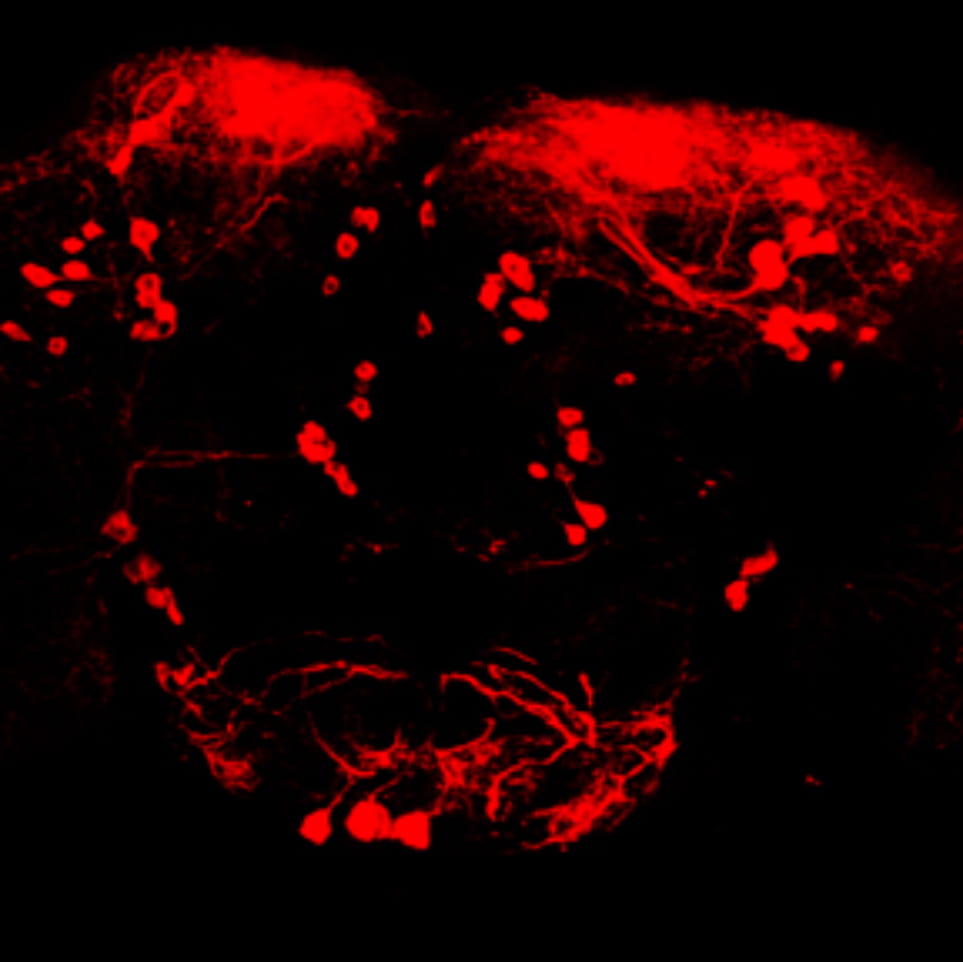Overview
My research focuses on how different factors such as aging and exposure to toxins (pesticides and heavy metals) contribute to neurological disorders and muscular dystrophies. A common feature of aging, exposure to toxins, and many diseases is increased levels of oxidative stress (oxygen radicals that are highly damaging to DNA, proteins, and other cellular structures). Therefore, my lab explores how stress response genes play a role in regulating aging and toxin exposure and how this contributes to a disease state. In order to address these questions, we use the genetic model organism Drosophila melanogaster (fruit fly), which has been instrumental in our understanding of many neurological and muscle disorders.
The role of stress genes in aging
My lab is interested in understanding how stress response genes like the p38 MAPK (p38K) regulate the aging process. We have previously found that over-expression of p38K leads to a 37% increase in lifespan as well as resistance to exposure to oxidizing agents like paraquat, a pesticide that has been linked to causing Parkinson’s disease. Loss of p38K results in a severely shortened lifespan, increased sensitivity to oxidizing agents, and accelerated age-dependent locomotor behavior dysfunction (Vrailas-Mortimer, et al. 2011 and Vrailas-Mortimer, et al. 2012). We are now testing what are the mechanisms by which p38K regulates the aging process.
Aged Control Flies
Video 1. Wild type (control) flies have normal climbing behavior at 3 days of age (Vrailas-Mortimer, et al. 2011).
Aged Mutant Flies
Video 1. By 3 days of age p38K mutant (control) flies have trouble climbing (Vrailas-Mortimer, et al. 2011).
The role of stress genes and pesticide exposure in Parkinson’s disease

Figure 1. Dopaminergic neurons in the adult Drosophila brain. When a person loses about 80% of these neurons, the classical motor symptoms of Parkinson’s disease usually become present. Similar locomotor problems also occur in fly models of Parkinson’s disease.
The role of protein homeostasis in Muscular Dystrophies
Protein homeostasis is the process by which the quality/functions of the proteins in the cell are maintained. Disruptions in protein homeostasis can lead to the accumulation of damaged proteins that no longer function properly, thus leading to tissue degeneration. Both aging and increased levels of oxidative stress can disrupt protein homeostasis and have been associated with certain forms of muscular dystrophy such as the Limb-Girdle Muscular Dystrophies (LGMD). We are testing how mutations in genes associated with protein homeostasis may be contributing to LGMD.

Copper toxicity and Neurological Disorders
Copper is an essential micronutrient that is toxic to cells if in too high or too low levels. We have an on-going collaboration with Dr. Victor Faundez at Emory University to explore how changes in copper homeostasis (the process of maintaining proper levels of cellular copper) may contribute to neurological disorders such as schizophrenia, Menkes disease, and Parkinson’s disease (Gokhale, et al. 2015).

Oxidative Stress in House Wrens (Troglodytes aedon)
In collaboration with Drs. Charlie Thompson, Scott Sakaluk, Pirmin Nietlisbach, and Nate Mortimer, we are working on understanding how oxidative stress impacts house wren health and physiology. Some species of birds, including house wrens, can lay eggs with varying pigment patterns from lightly pigmented eggs to darkly pigmented eggs. The pigment protoporphyrin found in house wren eggs is associated with oxidative stress, and it has been debated if the degree of pigmentation in the egg is an indicator of the oxidative state and subsequent health of the female. We found that females that lay lighter colored eggs have larger offspring and are older, suggesting that lighter eggs indicate a female with less oxidative stress and better health (Hodges et al 2020).